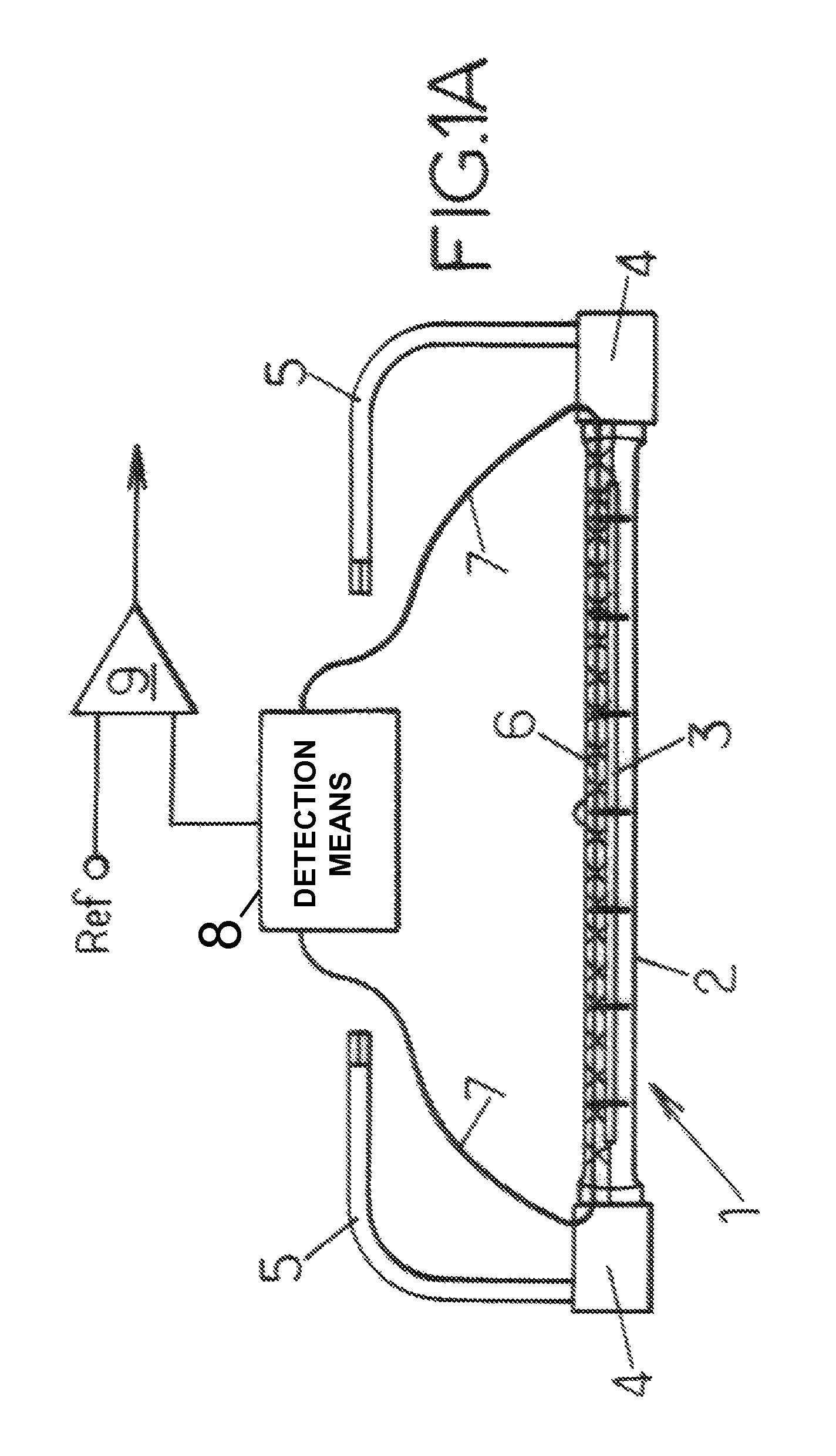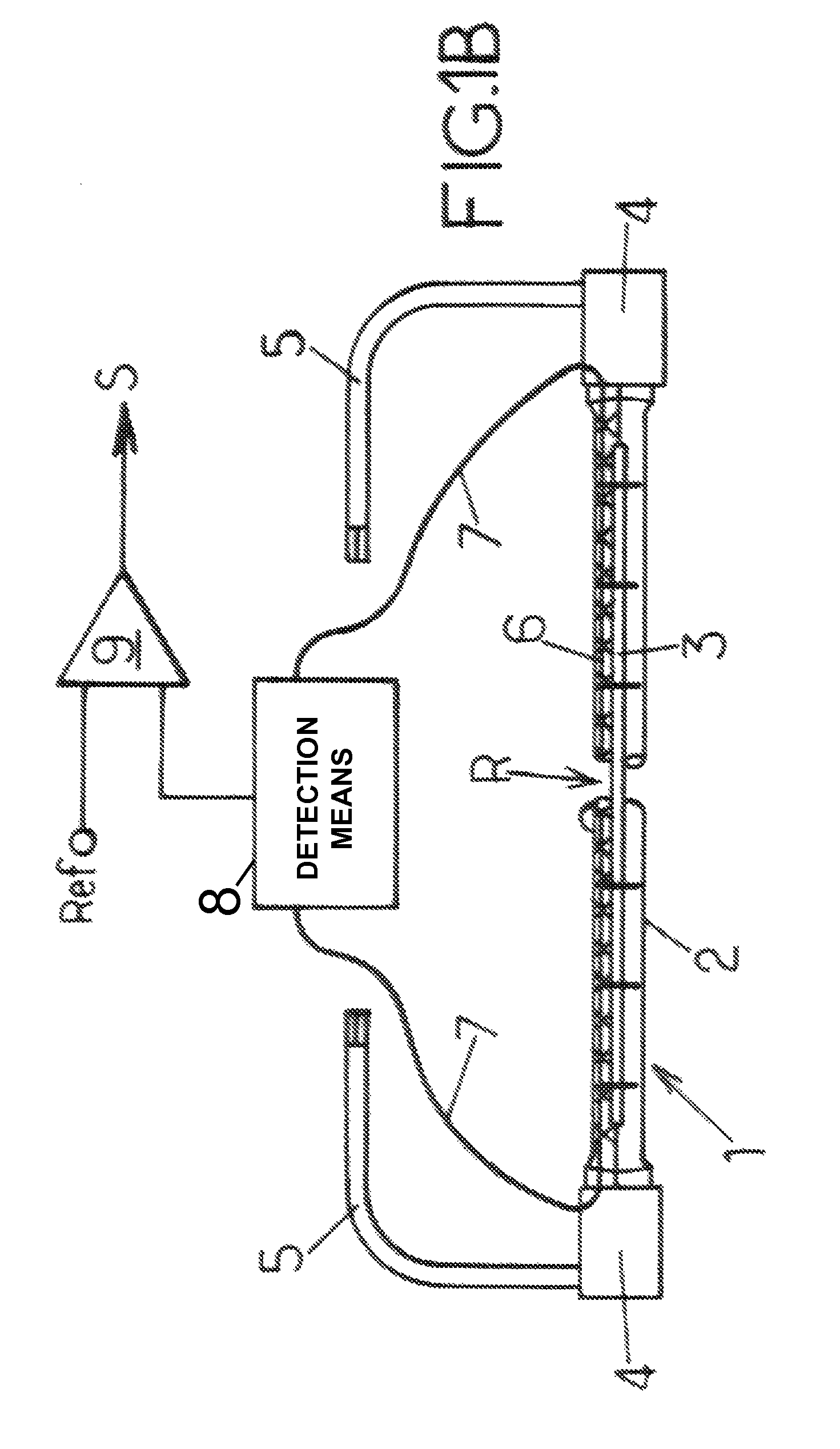Method for detecting the condition of a lamp for heating blank bodies made of thermoplastic material and heating installation arranged for use thereof
a technology of thermoplastic material and lamp body, which is applied in the field of container manufacturing, can solve the problems of ineffective detection of envelope breaking, time-lapse, and envelope disintegration, and achieve the effect of accurate signalling and low cos
- Summary
- Abstract
- Description
- Claims
- Application Information
AI Technical Summary
Benefits of technology
Problems solved by technology
Method used
Image
Examples
Embodiment Construction
[0028]Reference will now be made to FIGS. 1A and 1B, and more particularly firstly to FIG. 1A. The invention is situated in the context of an installation for heating the blank bodies made of thermoplastic material, intended for the manufacture by blow moulding or stretch-blow moulding of containers such as bottles, flasks or others. A heating installation of this type comprises a multiplicity of incandescent heating lamps, in general of the halogen atmosphere type, adapted for emitting an infrared electromagnetic radiation of given temperature and colour. These lamps, generally tube-shaped, are arranged parallel to each other in columns and distributed in several successive columns, for example unilaterally on one side of the path followed by the blank bodies driven by a conveyor.
[0029]In FIG. 1A, the part of this heating installation useful in order to assist understanding of the invention is shown in a very diagrammatic representation, namely a lamp 1 (here represented in its sta...
PUM
| Property | Measurement | Unit |
|---|---|---|
| electrically conductive | aaaaa | aaaaa |
| electrical resistance | aaaaa | aaaaa |
| conductive | aaaaa | aaaaa |
Abstract
Description
Claims
Application Information
 Login to View More
Login to View More - R&D
- Intellectual Property
- Life Sciences
- Materials
- Tech Scout
- Unparalleled Data Quality
- Higher Quality Content
- 60% Fewer Hallucinations
Browse by: Latest US Patents, China's latest patents, Technical Efficacy Thesaurus, Application Domain, Technology Topic, Popular Technical Reports.
© 2025 PatSnap. All rights reserved.Legal|Privacy policy|Modern Slavery Act Transparency Statement|Sitemap|About US| Contact US: help@patsnap.com



